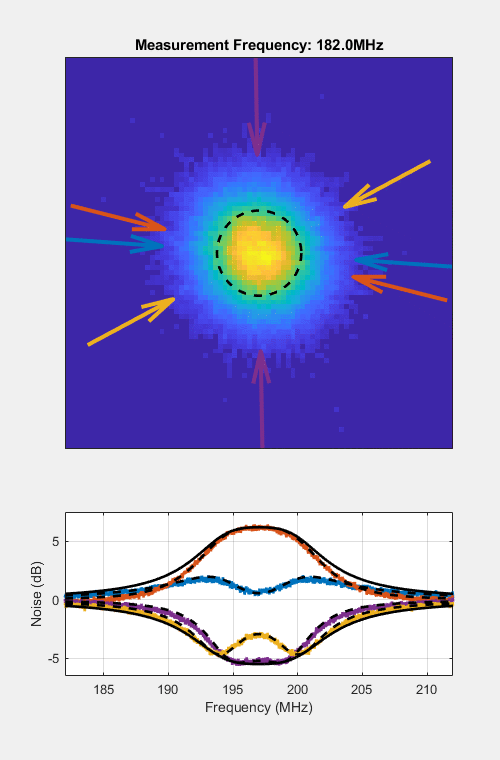A novel way to make frequency-dependent squeezed light
AEI team shows the first-time generation of frequency-dependent squeezed light from a detuned optical parametric oscillator
Quantum mechanics fundamentally limits highest-precision force measurements, such as those employed in gravitational-wave detectors. The resulting random noise is a combination of quantum shot noise and quantum back-action noise and defines the “standard quantum limit” of interferometry. This limit can be overcome with frequency-dependent squeezed light. While gravitational-wave detectors have been using “simple” squeezed light for more than a decade, they are only now starting to implement a quantum state called frequency-dependent squeezing. Ideally, this state is specifically tailored for each relevant measurement frequency. The conventional method of generating frequency-dependent squeezing is based on resonant squeezers and filter cavities. Now, a team of researchers at the Institute for Gravitational Physics of Leibniz University Hannover / Max Planck Institute for Gravitational Physics Hannover has demonstrated a new method of generating frequency-dependent squeezed light. It is based on detuning the optical parametric oscillator in a squeezed light source. This approach generates a squeezing ellipse (see Figure below), which is firstly specifically rotated but secondly also varies in this deformation shape for each measurement frequency. Due to the frequency dependence of the rotation angle and the deformation strength of the ellipse, the particular quantum state is more suitable to evade back-action noise than the state that is generated by the conventional method. The novel method is unlikely to replace the combination of squeezers and filter cavities in gravitational-wave detectors. It could, however, be a useful add-on for third-generation detectors such as the Einstein Telescope and might also have applications in other opto-mechanical precision experiments and coherent quantum noise cancellation.
Paper abstract
Frequency-dependent squeezing is a promising technique to overcome the standard quantum limit in opto-mechanical force measurements, e.g. gravitational wave detectors. For the first time, we show that frequency-dependent squeezing can be produced by detuning an optical parametric oscillator from resonance. Its frequency-dependent Wigner function is reconstructed quantum tomographically and exhibits a rotation by 39°, along which the noise is reduced by up to 5.5 dB. Our setup is suitable for realizing effective negative-mass oscillators required for coherent quantum noise cancellation.

Bottom row: Measurement of the width of the squeezing ellipse. Each colored trace corresponds to a specific angle under which the width is measured for all frequencies. For example, when measuring under an angle along the purple arrows in the top movie, the noise is decreased by more than 5 dB at a frequency of 197 MHz.
